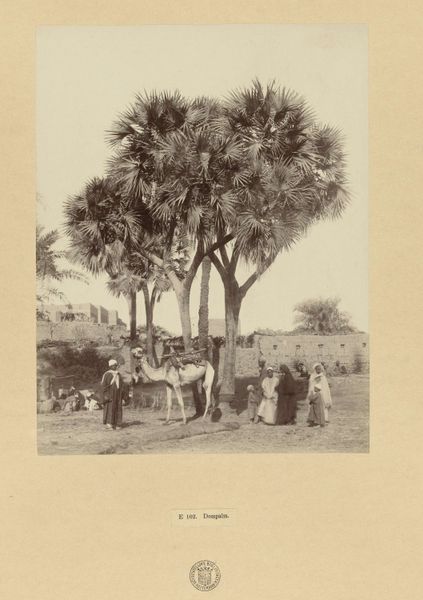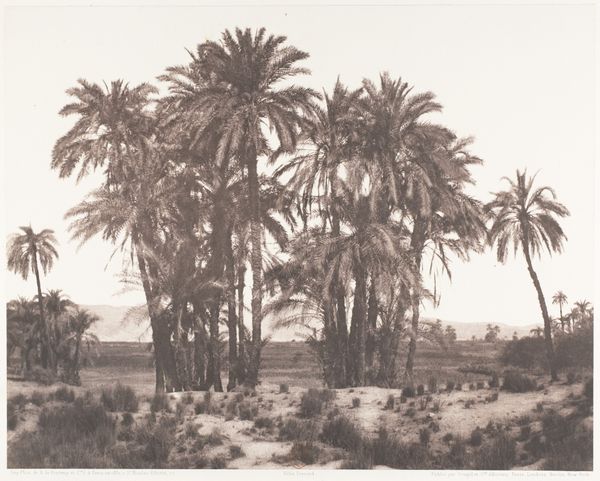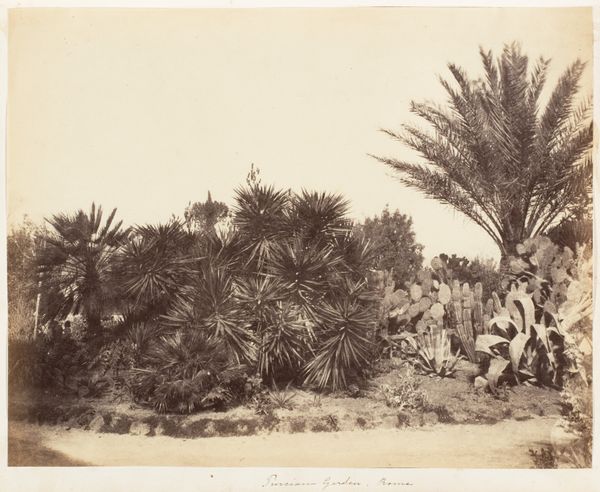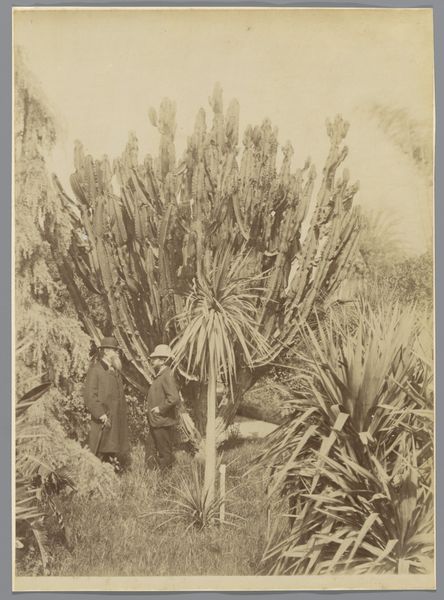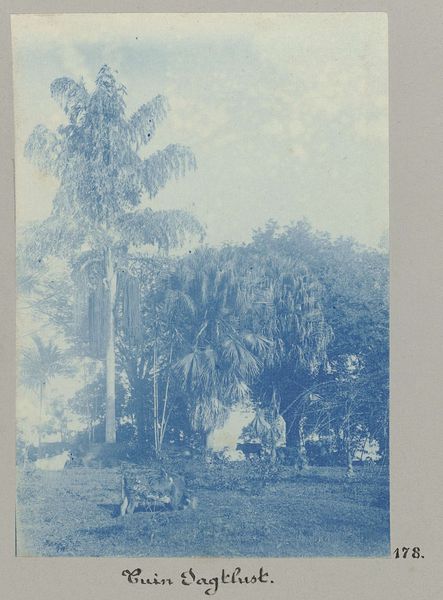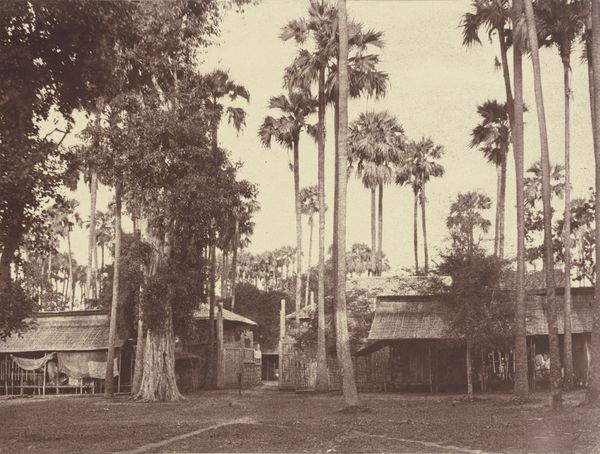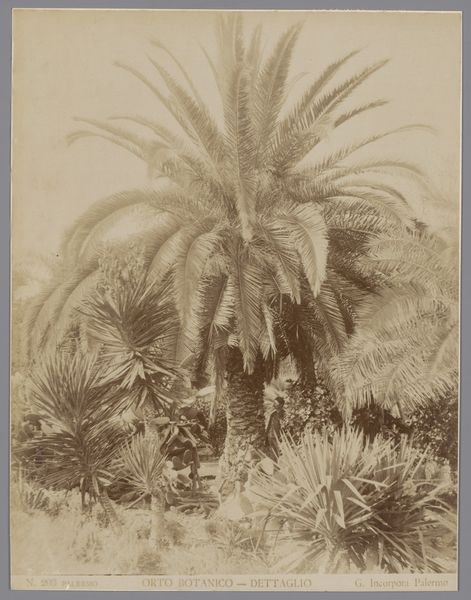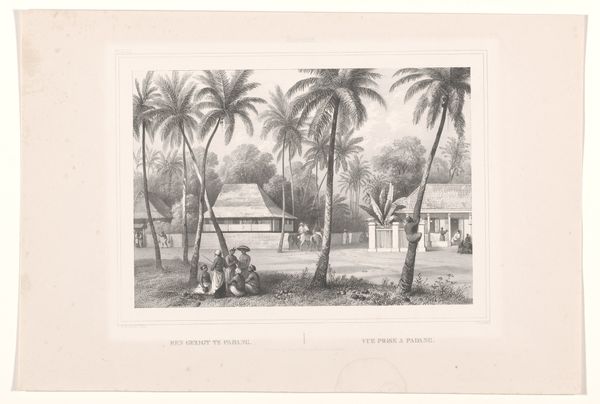
albumen-print, photography, albumen-print
#
albumen-print
#
landscape
#
photography
#
orientalism
#
albumen-print
Dimensions: 10 3/8 x 8 3/16 in. (26.35 x 20.8 cm) (image)14 x 11 in. (35.56 x 27.94 cm) (mount)
Copyright: Public Domain
Curator: Antonio Beato created this "Untitled" albumen print around the 19th century. The landscape hints at a particular construction of the "Orient." What are your initial thoughts? Editor: It feels suspended somehow. Like looking into amber. Or one of those dreams where everything’s bathed in this warm, hazy light. There’s a quietness, despite the people and animals present. A very composed stillness. Curator: The photograph aligns with Orientalist aesthetics common in the 19th century, often romanticizing and exoticizing the Middle East and North Africa through a colonial lens. How does this photograph participate in or challenge those narratives? Editor: The very act of taking the photo positions Beato as an outsider looking in, doesn’t it? I feel like I’m glimpsing something personal, but from a distance. I'm curious what was left out. And it makes me think, whose story are we really seeing here? Curator: Beato was very deliberate about staging scenes to capture what he believed were authentic representations of life in these regions, but these photographs were also intended for Western audiences seeking picturesque and ethnographic records. This raises important questions about cultural representation and power dynamics in visual media. Editor: Exactly. There's that beautiful tree providing shade for those gathered – maybe respite from the desert heat. Then you see a burdened camel standing there and are made to consider the labor, the commerce implied in its presence. I wonder if the scene being framed truly reveals what it shows. Curator: The albumen print process also contributed to the aesthetic appeal, enhancing detail and producing rich sepia tones that added to the romanticized view. As such, examining the materials can tell us much about period expectations. Editor: Definitely. Considering the social context brings a lot to the forefront. It's impossible to extract the colonial gaze. Curator: Absolutely. Considering this photograph through an intersectional lens, thinking about identity, gender, and race, unveils the layered complexities behind its serene facade. Editor: It’s strange to think how one image can simultaneously preserve a moment and mask so much, even when attempting to preserve an "accurate" truth. A quiet but persistent paradox of image making. Curator: Precisely. Understanding its historical, social, and artistic dimensions allows for a deeper, more informed engagement with such an image. Editor: This was more than a simple glance into the past for me, thank you for the historical breakdown!
Comments
No comments
Be the first to comment and join the conversation on the ultimate creative platform.
